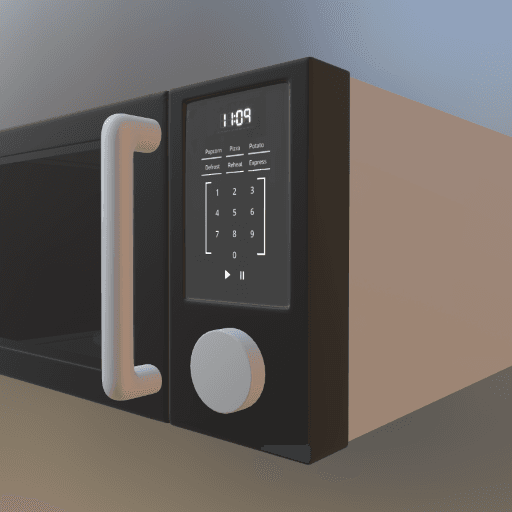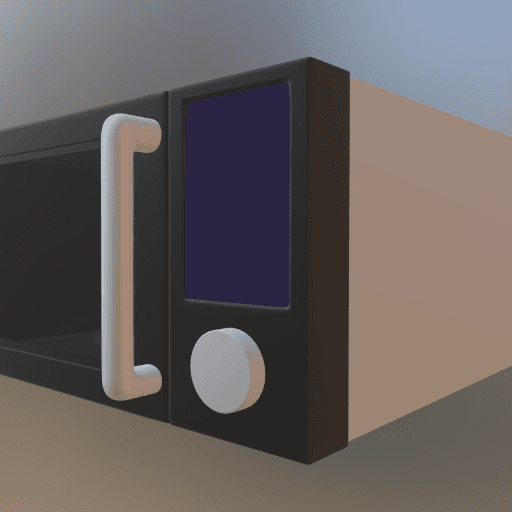The Complete IFC to STEP Enhanced Conversion Guide
Table of Contents
- General Information
- Converting and Optimizing IFC Files to STEP Enhanced
- What are IFC and STEP Enhanced files commonly used for?
- Comparison of Features Supported by IFC and STEP Enhanced
- Limitations of IFC Files to STEP Enhanced Conversion Workflow
- What's the best way to get IFC files into my 3D applications, and are there alternatives to using STEP Enhanced?
General Information
This guide is part of the RapidPipeline 3D Formats Knowledge Database. It shows how to convert IFC to STEP Enhanced, if you'd like to know more about the formats, please check out the following links:
Converting and Optimizing IFC Files to STEP Enhanced
RapidPipeline can import IFC files, but currently doesn't support exporting to STEP Enhanced format yet.
If you specifically need STEP Enhanced export functionality for your workflow, please feel free to get in touch with us - we'd be happy to discuss your requirements and potential timeline for adding this export capability.
If you need, you can import STEP Enhanced files and convert them to any of these 8 formats: FBX, glTF, OBJ, PLY, STL, USD, USDZ, and VRM.
In the meantime, you can explore other options on the 3D Formats Knowledge Database, which might serve as suitable alternatives for your workflow depending on your target applications and use cases.
What are IFC and STEP Enhanced files commonly used for?
The IFC file is a format mostly used for building information modeling data exchange.
The STEP Enhanced file is a format mostly used for product data exchange for manufacturing.

Comparison of Features Supported by IFC and STEP Enhanced
| Feature | Supported by IFC | Supported by STEP Enhanced |
|---|---|---|
| Morph Targets | No | No |
| Rigid Animations | No | No |
| Skinned Animations | No | No |
| Animations | No | No |
| Free-Form Surfaces | Yes | Yes |
| Geometry Compression | Partial0 | Partial1 |
| Quad Meshes | Yes | Yes |
| Basic 3D Geometry | Yes | Yes |
| PBR Materials | No | No |
| Transparent Materials | Partial2 | Partial3 |
| Vertex Colors | No | No |
| Materials | Yes | Yes |
| Scene Composition | Yes | Yes |
| Hierarchical Scene Graph | Yes | Yes |
| Scene Nodes | Yes | Yes |
| Standardized Format | Yes | Yes |
| Embedded Textures | No | No |
| Multiple UV Channels | No | No |
| Normal Mapping | No | No |
| Procedural Textures | No | No |
| Texture Compression | No | No |
| Texture Transforms | No | No |
| Texturing | Partial4 | No |
Limitations of IFC Files to STEP Enhanced Conversion Workflow
The following limitations should be taken into account when converting IFC files to STEP Enhanced format:
| IFC Feature (not supported by STEP Enhanced) | Limitation Details |
|---|---|
| Texturing | Texturing Support: IFC: Partial support | STEP Enhanced: No support   IFC Notes: Basic texture support through material definitions Impact: Texturing describes the process or refining the visual appearance of a 3D model's surface through additional 2D or 3D data, defined in a different reference system. The by far most common use of texturing are 2D texture images, applied to model visual material properties the 3D surface. Other cases include the use of procedural 2D or 3D funtions that produce intensity or color signals, which are then mapped to the 3D surface. For the vast majority of these cases (all of them except for 3D procedural functions), a parameterization or "Texture Mapping" is needed, which maps the 2D content to the 3D surface. Coming from a 2D coordinate space with coordinate axes often entitled U and V (in contrast to XYZ, which are the 3D surface positions), this process of mapping is also called UV Mapping, and it can be done with a dedicated UV map, or through a live mapping (e.g., box mapping). In this example, a texture image is applied to the 3D model to give the control panel a realistic look. Without support for texturing, the panel would have to use a single material instead, or all controls (including text) would need to be modeled through 3D geometry, instead of a 2D texture image. |
What's the best way to get IFC files into my 3D applications, and are there alternatives to using STEP Enhanced?
Doing 3D conversion right, especially at scale, can be tricky, as 3D data is in general a rather complex (yet very powerful!) medium. This also applies to IFC and STEP Enhanced files - the conversion guide above provides a rough first idea about that. Once you know what you would like to do, tools like RapidPipeline can help you perform the necessary steps, and to even automate the process for thousands or even millions of files.
Especially when introducing pipelines and workflows at scale in an enterprise context, it is usually good to rely on dedicated tools and expertise, making sure you do not introduce any steps into your 3D workflow that are detrimental to the final output's quality, or that take your team too much time (and money).
If you're interested to hire dedicated expertise from the best in the field to help your company reach your goals fast and reliably, please do not hestitate to contact DGG. Being the creators of RapidPipeline, and ambassadors for open 3D standards for more than a decade, we have been building some of the world's most advanced 3D pipelines, having processed many millions of 3D assets.
Therefore, our expertise will help you to reach your goals faster, at scale, and with the least possible friction, since we are focused on maximum interoperability.
To get started with 3D data conversion and optimization today, sign up for a free account!
If you have any questions, feel free to chat with our human team.
Meet the Author

3D Knowledge Team
3D Technical Artists
RapidPipeline lets you convert, optimize and prepare your 3D models, easily. Try it today, or meet our human 3D experts. The Best-in-Class Tools for Your 3D Processing Jobs